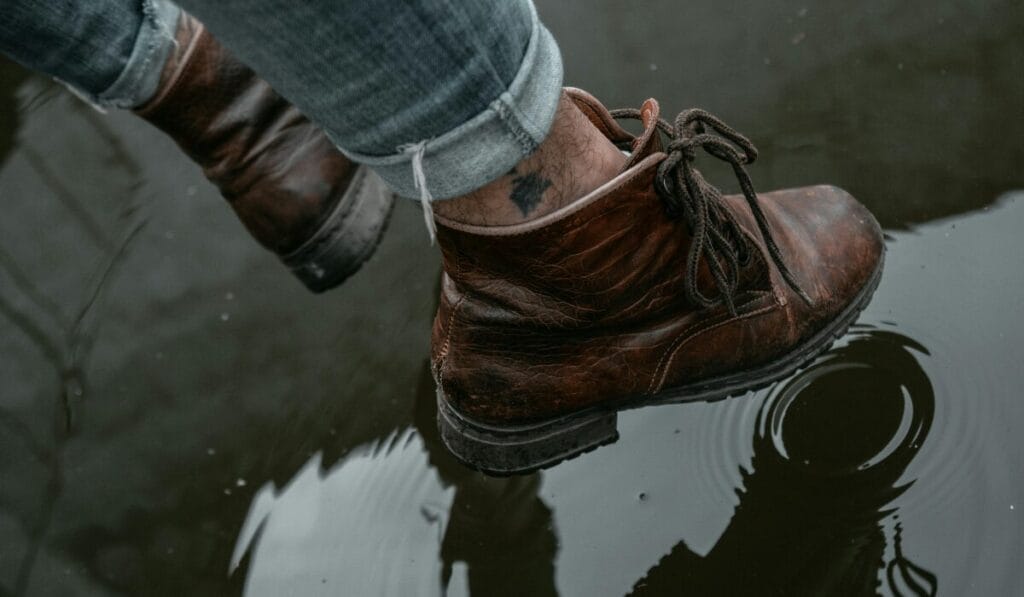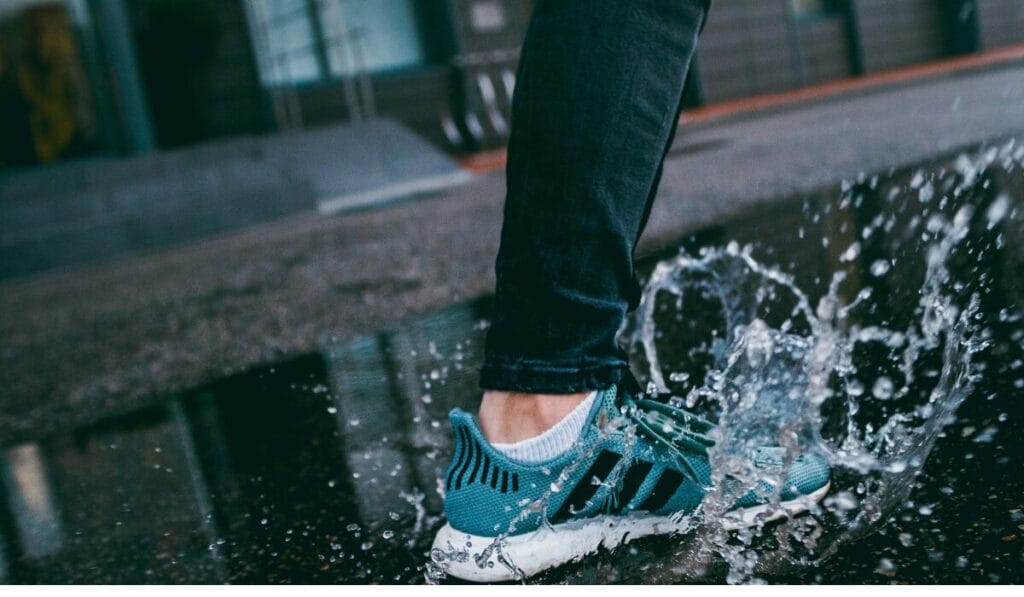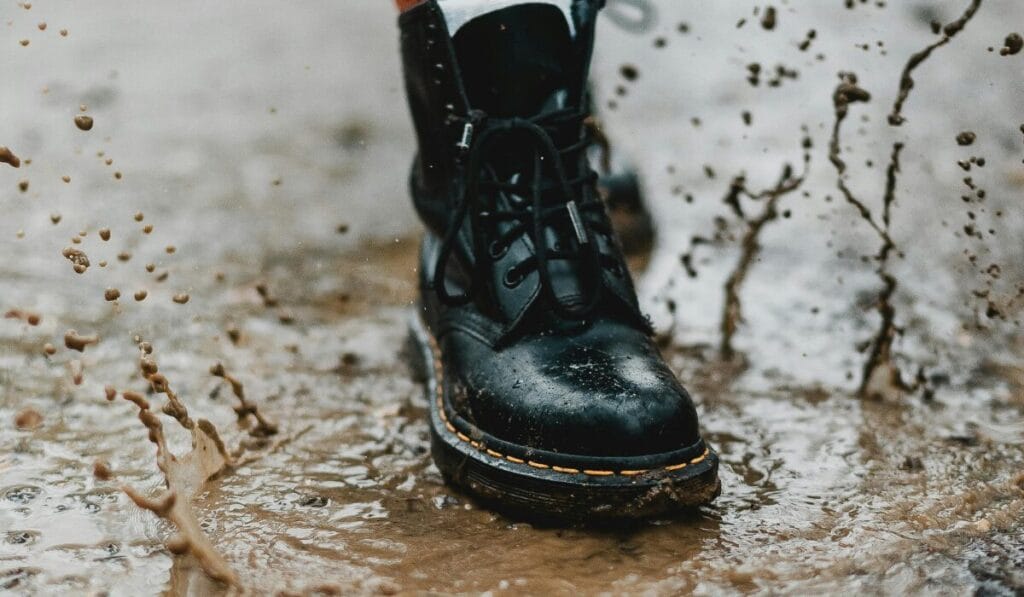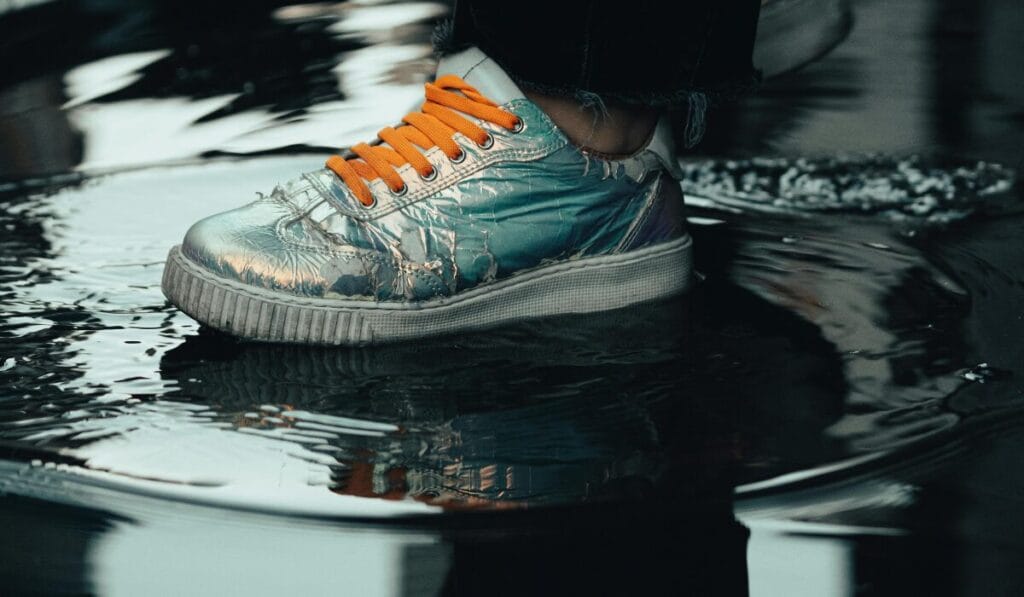Introduction
Shoes for Walking on Water, Many people wish to walk on water and walk around, but their feet don’t even get wet. Have you also dreamed of walking on water? Be it for an adventurous water sport, a unique photo shoot, or just for curiosity, or for sure, a stroll across a calm lake, river, or pond without getting your feet wet is truly fascinating.
Although it may seem impossible, the key to achieving this extraordinary experience isn’t magic—it’s the right pair of shoes. In this guide, we’ll explore innovative shoes designed specifically for walking on water. We’ll look at their features, benefits, necessities, and how to choose the best shoe for this aquatic adventure. Are you ready to make a decision? So let’s start.
Walking Shoes on water
Aquatic shoes are specialized shoes that provide support, buoyancy, and protection to allow the wearer to walk on water. These types of shoes are usually lightweight, waterproof, and made from highly durable and strong materials that prevent them from sinking or flooding. With features like water-resistant uppers, slip-resistant soles, and plush inserts, these shoes make it possible for people to step on shallow bodies of water without the risk of drowning or falling, which is a huge plus.

Features of Shoes for Walking on Water
When looking for the perfect and durable pair of water shoes, keep a few essential points in mind.
1. Cheerfulness
A good sense of humor is essential when out on the water. Water shoes need to be lightweight and designed with materials that help keep your feet agile on the water. Many water running shoes have foam or inflatable inserts to help provide extra cushioning.
2. Water Resistance
The waterproof or water-resistant material determines whether the shoes will be heavy or wet. And to avoid discomfort, look for shoes made of breathable, quick-drying fabrics. Before doing this research is necessary.
3. Non-Slip Soles
If walking on slippery surfaces, it is important to choose non-slip shoes. The soles are made of special rubber or textured original materials that provide better traction on wet surfaces, making sure you don’t slip or lose your footing. It is important to take this precaution.
4. Support and comfort
If your feet still find it difficult to walk on water, then it is important to find shoes that provide adequate cushioning and support. And as well, Arch support and shock-absorbing shoes help prevent foot fatigue, discomfort, and deformity, especially for prolonged use.
5. Durability
It is imperative and essential that waterproof footwear should be able to withstand constant exposure to water, sand, and various other elements. Shoes made of durable, branded, strong, and corrosion-resistant materials like neoprene, rubber, and synthetic fabrics are ideal for long-lasting wear, as they are all original.

Types of Water Shoes
As you know there are many different types of water shoes on the market, each designed for specific purposes and activities. Here we mention not all but some of the most common types. except for the sketcher.
1. Aqua Shoes/ The shoes of Aqua
Aquashoes, as everyone knows, are lightweight, slip-on shoes made from water-resistant materials and materials such as mesh or neoprene. They are designed for use in shallow water, providing a balance between comfort and functionality, learn from Koi Aqua. Their breathable material protects your feet from stones, debris, sharp objects, or various other painful objects to drain water easily.
2. Water Sandals/ Sandals for water
These sandals are usually used in summer. Water sandals are often open-toed shoes with adjustable straps, straps, and non-slip soles that are ideal for walking on wet surfaces such as riverbanks, oceans, or beaches. Water sandals offer superior ventilation, making them ideal for warm weather conditions.
3. Water Boots
According to experts, these water shoes are more heavy-duty shoes, made of neoprene or rubber on the upper, providing full coverage and comfort to the feet and lower legs. These shoes are perfect for wading in deep or strong currents, as well as on water, as they provide better stability and protection from the elements. This is the reason why it is considered among the best water shoes.
4. Water Shoes with Buoyancy
These types of shoes are designed with buoyant inserts and lightweight foam to help users walk on water without sinking. Often used in experimental or recreational and hiking settings and locations, they provide a combination of water protection and a light level of flotation to keep the wearer happy.
Can Shoes Help You Walk on Water Better?
Water shoes can increase your ability to move in deep water, but remember that these shoes do not completely protect you from drowning. They can provide extra buoyancy, traction, and protection to make walking on water easier and safer, but they work best in controlled conditions, such as calm lakes, rivers, or shallow ponds. Also you know the deferent between walking and running shoes.
Some of these shoes are designed for specific water activities, such as paddle boarding, kayaking, or river trekking, where walking on water is more likely. But, if you’re hoping to wade across an ocean or deep water, no shoe will allow for that kind of magical maneuverability.
Choosing the Best Shoes for Walking on Water
When choosing the right shoes, keep a few things in mind.
1.purposed Use
The thing to consider is what activities the wearer is engaged in while wearing the shoes. Does he plan to walk on a pond, a shallow stream, or a quiet beach? The type and nature of his activity will determine what kind of shoes he needs, with more cushioning, durability, waterproof protection, or casual shoes.
2. Comfort and Fit
The rule of thumb is that water shoes should fit the foot comfortably. Too tight can make your foot feel tight, and too loose can make your foot feel too loose, and you can be at risk of tripping and slipping. So make sure to check out the adjustable straps or elastic bands that can help you get the fit you want.
3. Sea Conditions
If you are wading in calm, deep water, lightweight shoes with breathable mesh are perfect for you. But if you plan to wade in fast-moving rivers or deep water, choose shoes with more cushions and sturdiness, and in that case choosing sturdy shoes becomes a must.
4. Aesthetics and Design
Aesthetics are very important to humans but aesthetics can also play a role in your selection process. Always choose shoes that suit your style and preferences, not just for fashion, whether that means sleek, minimalist designs or bolder, colorful options. This means that you should avoid buying something fancy and prefer something that is both fancy and strong.
5. Your Budget
And the last thing is to consider your budget. Well, the higher the budget, the better the model, but water shoes can range from affordable options to premium models depending on the materials and technology used. Be sure to balance price and quality to find the best price for your needs so there is no tension later.

The Advantage of Water Walking Shoes
1. Protection from penetrating Objects
The most important benefit is human protection and the biggest and most important benefit of water walking shoes is the protection they can happily provide. Water shoes protect your feet and legs from rocks, debris, and painful and sharp objects found in natural bodies of water and are among the aquatic accessories.
2. intensified Stability
All water-powered shoes are often made with non-slip soles that help maintain balance and stability even when walking on wet, slippery rocks, sharp objects, or sand, which is a plus point.
3. Stability in damp Environments
The biggest problem when walking with water is getting the feet wet, even if the shoes get wet while walking, it protects the feet from being wet for a long time and prevents your feet from getting blisters, but this is only when the shoes are original.
4. Versatility/adaptable.
Shoes that can be used on the water are perfect not only for walking on the water, but also for beach sports, surfing, paddle boarding, and other water-based activities that provide many times more versatility than walking on the water.
Conclusion
To sum up the whole blog, water walking shoes provide a unique, improved and innovative solution to enjoy water activities without the discomfort and difficulty of wet feet. Whether you’re walking on a calm lake, strolling the beach, or engaging in water sports or other activities, the right pair of water shoes can significantly enhance your experience without getting in the way. K. By understanding the features, benefits, and some essentials and different types of water shoes, you can make an informed decision and choose the best pair for your needs that will be the easiest for you.
FAQs
1. Can I use my water shoes for swimming?
No, walking in water and swimming in water are two separate activities, so aqua shoes are designed for walking in shallow water or wet surfaces, not for swimming. They are not designed to function as flotation devices so the answer is no.
2. Are our water walking shoes suitable for all water conditions?
Yes, but there is one thing to remember the Water walking shoes work best in placid, shallow waters. They may not be useful in rough, rocky seas or deep water where buoyancy alone will not keep you afloat.
How to clean running shoes?
Wash the waterproof shoes with clean and fresh water after use. Make sure to dry them thoroughly in the sun or any other way before storing them to avoid any mold or mildew.

